Fitness trackers are useful companions for sport: Fitness trackers record the training progress and continuously measure the most important vital values.
![]()
The selection of models is now large and the prices fluctuate a lot: You can get cheap fitness wristbands for less than $30 and they offer a sufficient range of functions for after-work sports. But if you want to have full control over the training, you pay up to $300 for premium models.
Testing the best fitness trackers
First, we present the models in detail and estimate how much you generally have to spend on a good fitness tracker. Then we will explain to you which methods we use to test the devices and which types of fitness trackers are available. Finally, in the purchase advice, we give tips on buying a fitness tracker and answer the most important questions.
Best Overall Fitness Tracker: Fitbit Sense
Fitbit Sense convinces with very good equipment, many health features, and a reliable, beautiful touch display. Unfortunately, the fitness tracker does not support local MP3 files or popular music streaming services.
Fitbit Sense (at the time of writing this article) is the manufacturer’s latest flagship among fitness trackers. Compared to its predecessor, the Fitbit Ionic (to test), the Sense has improved in all categories. The health features in particular are being updated with an ECG and SpO2 sensor. The SpO2 sensor measures the level of oxygen in the blood and is also known as a pulse oximeter. In addition, the Fitbit also offers a range of mindfulness functions, it measures the stress level and lets you balance it with meditations. The cycle and sleep can also be tracked using a tracker and app.
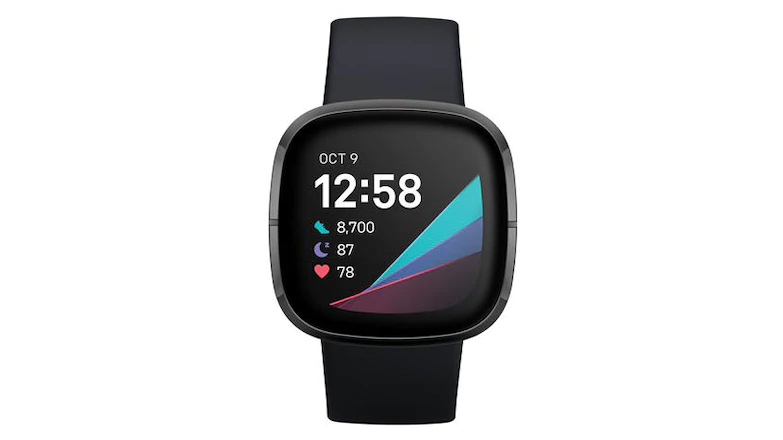
In addition to the health features, the Fitbit Sense also offers lavish sports features. The tracker automatically recognizes you doing certain activities such as walking, running, or cycling.
The app also has over 20 other training modes. Among other things, swimming is possible, the sports watch is waterproof up to 50 meters. The sensors also work precisely and provide accurate measurements.
The display can be read very well at any time. It has a high resolution, shines brightly, and can be operated reliably using touch. Here you also have the option of an always-on display, as with the newer models of the Apple Watch. But this also pulls on the battery properly: If you leave your display illuminated at all times, you will lose two days of running time. In general, the battery is not the strongest.
The manufacturer specifies a runtime of six days, but in our measurements, we only come to five days. This can be done better.
Another shortcoming of the Fitbit Sense is the limited music features. The fitness tracker does not support local mp3 files or local linking with most music streaming services including Spotify, Apple Music, and Amazon Music. Deezer runs on Fitbit, but you need a premium subscription. Specifically, this means: If you want to go for a run without a smartphone and listen to music, you need a Deezer Premium subscription. So there are additional costs for you.
If that doesn’t bother you, however, you can get a very good fitness tracker for around $300.
Best Budget Fitness Tracker: Xiaomi Mi Smart Band 5
Like its predecessor, the Xiaomi Mi Smart Band 5 is a good and very affordable fitness tracker. In the test, the 5th edition of the Mi Band convinces with a great display, well-thought-out operation, and of course a great price-performance ratio.
Like its predecessor, the Xiaomi Mi Smart Band 5 is a good fitness tracker at an affordable price. Visually, the Mi Smart Band 5 hardly differs from the Xiaomi Mi Band 4, but it comes with a larger display and new functions.
Not only is monthly period tracking new, but also 5 additional sport modes. In addition, the sleep analysis has been improved – the Mi Smart Band 5 now recognizes “naps” and REM phases. Otherwise, all basic functions are also on board.
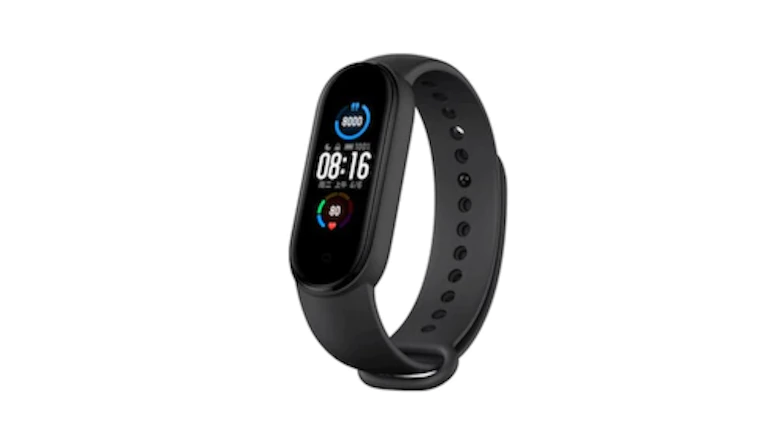
The operation of the Xiaomi Mi Smart Band 5 is well thought out: You can choose the order of the widgets and customize the operation via the app. Unfortunately, the size of the colored OLED display has a negative impact on the battery life. This shrinks from 17.5 to 10.2 days compared to Mi Band 4. The Xiaomi Mi Smart Band 5 still outperforms most of the fitness trackers in our list of the best.
The equipment is decent, especially in view of the low price. The Xiaomi Mi Smart Band 5 is waterproof to 50 meters. Heart rate measurement and GPS sensor via smartphone are also included. Various activities are also recorded. With a bracelet length of 145 to 210 millimeters, it is also suitable for narrow wrists. However, we miss an integrated audio player and mobile payment functionality.
Best Fitness Tracker for Swimming: Garmin Vivoactive 4
The Garmin Vivoactive 4 is a high-quality fitness tracker that leaves little to be desired in the test. It scores with measuring accuracy and pre-configurable reply messages. But its price is set very high for it.
The Garmin Vivoactive 4 fitness tracker offers new sensors and functions compared to its predecessor. Among other things, the Pulse-Ox function is used to measure the oxygen content in the blood during sleep, and the Body-Battery-Index gives you recommendations regarding stress level, heart rate or sleep quality.
You can pair sensors for more precise heart rate measurement, cadence, and outside temperature using the ANT + radio standard.
You also have an overview of your water consumption or your menstrual cycle, and you can now measure your heart rate while swimming too. The tracker is waterproof up to 50 meters water column (5 bar/atm), so you should not dive with it – this is only recommended from 100 meters water column.
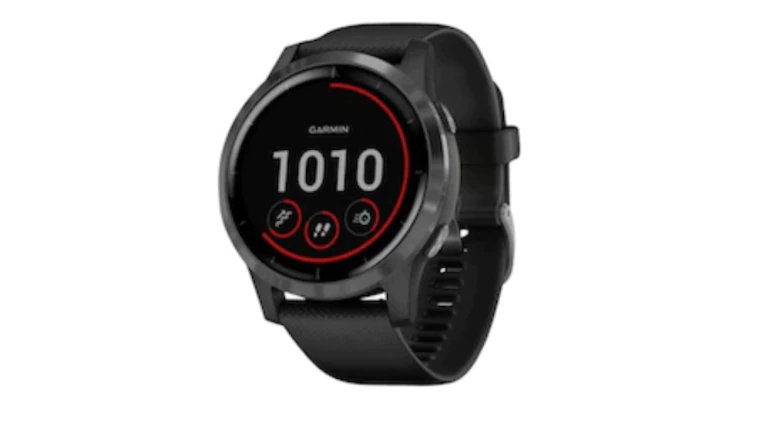
In the fitness functions, you can not only choose from different sports such as golf, swimming, or rowing, the tracker also automatically recognizes sports based on movement. There are variable daily goals, training programs, logs of the last seven activities, and in addition to the preinstalled apps, you can add more.
Garmin also works with the calorie counter app MyFitnessPal. The Vivoactive 4 has a music player with internal memory, a chest strap is included and the colored LC display is easy to read even in the sun. However, we missed a brightness sensor in the test.
The fitness tracker achieved a top value in our list of the best for the accuracy of the counted steps; we were able to determine a match of 98.9 percent. We also liked the eight days of battery life.
The included bracelet is 135 to 200 millimeters in length and is not suitable for larger wrists – but it is interchangeable.
The Garmin device is available in different colors and in case sizes 40 millimeters and 45 millimeters. The price is pretty high, which is as expensive as a smartwatch.
Best Fitness Tracker and Smartwatch: Fitbit Versa 2
The Fitbit Versa 2 convinces with its strong OLED display and extensive options for fitness tracking – only internal GPS is missing.
The Fitbit Versa 2 fitness tracker, which is waterproof up to 50 meters of the water column, achieved a step accuracy of a strong 99.4 percent in the test.
The manufacturer specifies the battery life as 5 days, and we even measured 6.8 days in normal operation. The AMOLED display shows a sharp picture and is easy to read even in sunshine.
Also pleasing: the battery warning is sent to the display via push message and email.
You can select various activities directly on the device and define them using the app. GPS functionality, app notifications, and other smart functions are available via the link with the smartphone.
In addition to Bluetooth, WLAN is also available for this. NFC for contactless payment and a music player with memory is on board. Not so nice: WhatsApp messages that were read were marked as unread in our test.
Best Fitness Trackers for 2021The Fitbit Versa 2 offers essential fitness tools such as a pedometer, heart rate monitor, altimeter, and sleep analysis. The Fitbit app is available for Apple and Android smartphones. A food diary with a food database, a period calendar, and other aids are integrated there, and you can also compete with your friends in terms of sport. The device also has a microphone and support for the Alexa voice assistant. However, since there is no built-in loudspeaker, you can give commands but receive no response.
The display has an optional always-on function, affecting the battery life. Two strap lengths are included in the scope of delivery so that the fitness tracker definitely fits.
Best Fitness Tracker with Long Life: Honor Band 6
Perhaps the latest fitness bracelet from Honor under the direction of the former parent company Huawei, we like it in the test due to the beautiful display, the decent equipment, and the excellent battery.
The Honor Band 6 is a typical fitness tracker that masters all basic functions and can also measure the oxygen content of the blood (SpO2). If you want to record specific training units, you can choose the right activity from ten different sport modes. The Honor Band 6 fitness tracker even measures the oxygen content of the blood!
The large OLED display is easy to use and can be read perfectly from all directions. Unfortunately, the Honor Band 6 is not equipped with a GPS sensor – outdoor activities such as hiking, running and cycling are therefore only possible with a connected mobile phone.
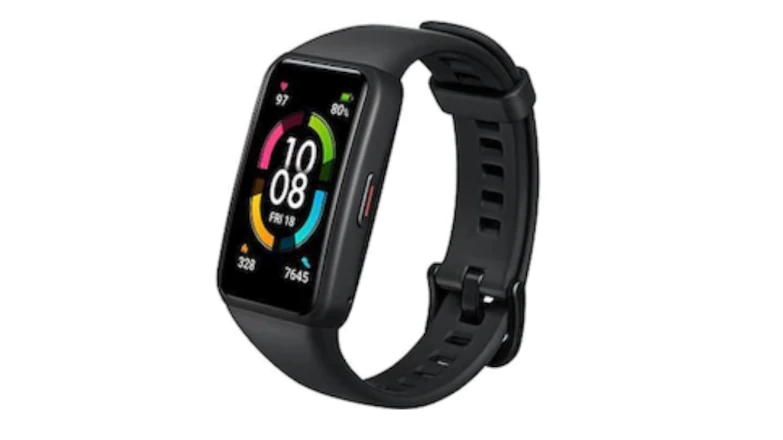
Despite the large color display, the Honor Band 6 pleases with its long battery life. In our test, it lasted a full 19 days. Thus, the runtime is even longer than the manufacturer promised. The short charging time is also first-class: after only 12 minutes the battery is already half charged. The Honor Band 6 needs 78 minutes until the display shows us 100 percent.
In our step number test, the value measured by the Honor Band 6 was only about 0.2 percent too high on average. That’s perfectly fine. The durability of the bracelet was less satisfactory: after only three weeks of daily wear, the top layer was peeling off at some points of friction. Changing a bracelet shouldn’t be that fast.
How much do I have to spend on a good fitness tracker?
The more equipment and connectivity there is in the fitness tracker, the more you have to pay for the device. In the expensive models with extensive app support, the transitions to the smartwatch are now fluid, but fitness trackers are usually cheaper than universal devices.
Models tailored purely for fitness functions, often with a compact wristband size, are available for as little as $20. In case of doubt, these only offer pedometers and heart rate monitors but are at least robust and waterproof. You will find a number of good models in the price segment between $30 and $60.
However, if you want a fitness companion with a large display that can play music and connect to your smartphone, you pay $150 and more. Premium models for over $200 are smart training companions for the semi-professional sector.
What is a fitness tracker and how does it work?
The fitness tracker on the wrist continuously measures body functions through skin contact via the sensors on the underside. This not only helps professionals, for example, to maintain the ideal heart rate for training and to follow progress but is also very popular among amateur and after-work athletes.
The pulse is usually determined optically, the step counter is based on the data of the acceleration sensor and partly also the GPS position determination. You can wear many devices on your wrist during your sleep at night; they monitor and analyze the phases of sleep.
In case of doubt, the data is stored on the device, but most fitness trackers can also connect to a smartphone app via Bluetooth. The range of functions fluctuates.
What types of fitness trackers are there?
Fitness trackers are usually cheaper than smartwatches, but the fitness trackers themselves are divided into two groups: The more expensive models are similar in appearance and features to the smartwatches, are usually the size of a wristwatch and therefore have a large display Touch functionality.
Cheaper fitness trackers, on the other hand, are limited to the core task: heart rate and acceleration measurement. They are in the form of a bracelet with a small display and a limited data display. Nevertheless, they transmit to the smartphone app via Bluetooth.

Different models of fitness trackers are suitable for different types of sport, swimming watches withstand higher water pressure, and models with GPS positioning are particularly suitable for running.
In this area, however, there are also heart rate monitors with GPS, these are even more professional. They are usually considerably more expensive but offer additional training functions such as tracking different types of running and detailed training plans.
A smartwatch, on the other hand, is a universal device, fitness functions are only part of the extensive range of equipment. You will find models in different price ranges, top devices can cost over $600.
What should I look out for when buying the best fitness tracker?
Not all fitness trackers can be controlled via the display, some models even do without it completely. Here LEDs show the status and progress, the data is read out via the app and the device can only be programmed there.
Most wristband fitness trackers have at least one small display. Sometimes this is a bit difficult to read and cannot display a lot of information at the same time, but it responds to pressure or even offers a full-fledged touchscreen. Keys are also popular on compact devices.
Fitness trackers in watch form, on the other hand, are similar to smartwatches and offer extensive control functions with a touchscreen and several buttons. The display technology also has an influence on the quality: OLED displays offer the best picture, but LCDs are satisfactory in many cases.
A brightness sensor adjusts the display to the ambient light. Colored representation is not absolutely necessary for fitness trackers.
Watertightness
Fitness trackers are mostly used outside, including in the swimming pool. According to the operating instructions, many models are suitable for swimming, but the information is a bit misleading.
The phrase “waterproof up to 50 meters” refers to the hypothetical pressure in 50 meters of water, the so-called water column, and is synonymous with 5 bar and 5 atm. This does not mean that you can dive 50 meters with the fitness tracker, the activity creates higher pressure.
You can swim laps in shallow water without any problems, but an actual swimming watch must be able to withstand higher pressure, in the best case at least 100 meters of the water column.
If the manufacturer specifies water protection as less than 40 meters, the device is only protected against splash water, but not suitable for swimming. If the fitness tracker has an IP rating, maximum IPX8, it is waterproof, but also not suitable for swimming. Protection against water must inevitably be available because you sweat during fitness training.
Ergonomics
The shape of the fitness tracker must fit well on the wrist and must not interfere with physical activities. The small profile of a device the size of a bracelet is very suitable for this, but some users do not want to forego the information content of a large display.
With rounded edges and the special ergonomic shape of the fitness tracker, however, the manufacturers take the requirements into account.
The tight fit of the bracelet is also important. Occasionally it is not interchangeable because the display is directly integrated.
Normally, however, you can change the bracelet if it is too small or too big. Manufacturers usually offer different sizes and sometimes even include interchangeable wristbands in the scope of delivery.
The material of the bracelet also plays a role in comfort – silicone is widely used here, and nylon is an alternative.
Sports sensors
Many fitness trackers can automatically recognize types of sport, the acceleration sensor is largely responsible for this. This differentiates between walking, running, or cycling. In addition, the pulse sensor registers when you start, pause and end your training session. Individual lanes are sometimes recognized when swimming.
However, this does not work equally well with all sports and on all devices, as a rule, you can also select the sport manually and have other options such as rowing, skiing, or golfing.
Additional sensors make the measurement more precise, the GPS navigation system can help to determine the distance and a barometer recognizes the change of floor based on the air pressure.
Most fitness trackers measure their heart rate continuously; in combination with motion sensors, sleep phases can be identified and used, for example, to determine the ideal wake-up time.
Smartphone connection
Manufacturers now provide a smartphone app for almost all fitness trackers and this usually works on both Android and iOS mobile devices. The data from the sensors is collected and evaluated there, so you can display an activity log, for example.
Devices that are difficult to operate using their own display can be programmed in the app. Data is sent and received via Bluetooth. In many cases, a web app is also available with the same functions that you can use on a PC or Mac. The synchronization takes place via a USB cable.
Occasionally, manufacturers offer complete networking with the smartphone, as is known from smartwatches. Messages and app notifications are visible on the display of the fitness tracker.
Music player & additional functions
If you like to listen to music during fitness training, but don’t want to lug around a second device in addition to the fitness tracker, you need an integrated music player and an internal memory for the songs. You will find the function as standard in models from 150 euros, cheaper devices rarely have the capacity for it. The data can be transmitted via a USB cable and, in some cases, via WLAN.
In addition, some of the more expensive fitness trackers are equipped with NFC so that you can use the device for contactless payment. There is almost always a clock and a vibrating alarm clock. The manufacturer’s apps offer additional functions such as a calorie counter, a nutritionist, or networking with friends.
Battery
Usually, there is a rechargeable battery in the fitness tracker, but there are a few models with battery operation. The devices are extremely economical, which is why the battery life is several days.
The value varies depending on the fitness tracker’s functions and wireless modules. Activated GPS drains the battery quickly.
The smartwatch-like models last between 6 and 8 days on one battery charge in normal operation. Less than 6 days are rather disappointing.
The fitness trackers in the form of a bracelet, which are limited to the essential tracking functions, usually have a significantly longer running time: 8 days represent the lower end of the scale, two weeks are not uncommon and individual models can even last a month. So you can wear the fitness tracker day and night if you want.
The devices are charged via charging cables, because inductive charging, as is the case with smartwatches, is rather a rarity with fitness trackers.
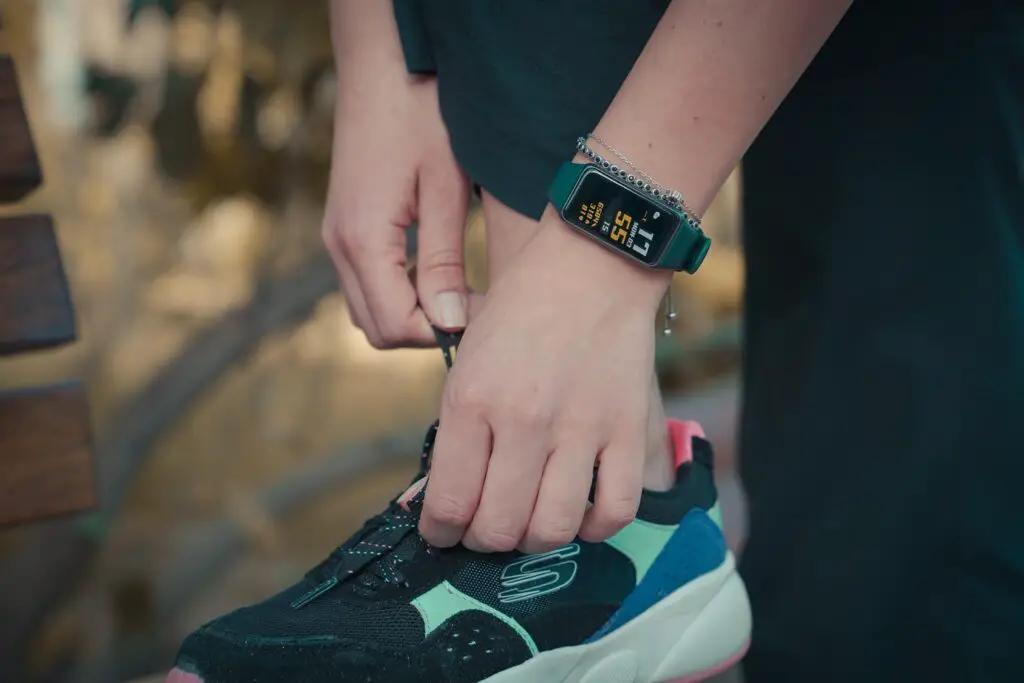
What is the difference between women’s and men’s best fitness trackers?
Some manufacturers also offer their own women’s models for their fitness trackers. This usually only applies to devices with a large smartwatch housing, the design and color scheme are changed here. In the case of wrist-sized fitness trackers, on the other hand, there is little room for design variations.
Basically, there are no technical differences between women’s and men’s models, and different case sizes and wristbands of different lengths are offered for wearing comfort so that the fitness trackers fit around every wrist.
Functions such as the monthly period calendar, if provided by the manufacturer, are an integral part of the app and not an optional extra. Women’s models have no advantages or disadvantages, just an alternative look.
Best fitness trackers for children and seniors
Children also need exercise, but the use of special fitness trackers for children is rather questionable. The corresponding devices are available for around $30 to $80, mostly in a colorful design suitable for children.
The main function is a step counter encouraging children to achieve new daily highs. Other sensors, such as a heart rate monitor, are usually not on board. Installed apps only include little things, including “rewards” for goals achieved. Parents have access to their children’s data via an app.
The danger, of course, is that activity monitoring can degenerate into pressure and stress. As long as the fitness tracker encourages young users to exercise more in a playful way, the device can have a health benefit.
For fitness trackers that are specially offered for seniors, the essential addition is a built-in blood pressure monitor. That sounds very helpful, but it is technically less convincing. Of course, a wristband cannot replace the cuff on a real blood pressure monitor.
The fitness trackers with blood pressure measurement use optical sensors to determine the pulse wave transit time, i.e. the distance that the pulse wave covers in the vascular system.
The fitness tracker can then use this to estimate the blood pressure – the result is very imprecise but can provide indications of dangers.
Manufacturers are working on more reliable methods of measuring blood pressure with the fitness tracker, but so far you shouldn’t rely on what the display shows. In principle, a “normal” fitness tracker is also suitable for seniors, but you should perhaps attach importance to a larger display and simple controls.
Dangers of fitness trackers (yes, even the best fitness trackers!)
With fitness trackers, there are basically the same sources of risk as with other wearables such as smartwatches, albeit to a lesser extent. Pure fitness trackers lack a SIM slot and mobile phone reception, so the potential radiation exposure is low. The high-frequency electromagnetic fields used when making calls with the smartphone and the tested SAR value are irrelevant.
The danger of radiation is still controversial anyway. WLAN, Bluetooth, and the sensors in the fitness tracker have hardly any influence as radiation sources.
When it comes to data protection, however, you face the usual dilemma: If you use fitness apps that evaluate your body data, you largely give up control over it.
On the one hand, the app providers can pass on the data themselves; on the other hand, unauthorized persons can access it if they are not adequately protected. In most cases, users cannot object to the collection of data; by using the app, they consent to the data being passed on. You can only prevent this if the tracker is not networked at all and the data does not leave the internal memory.
